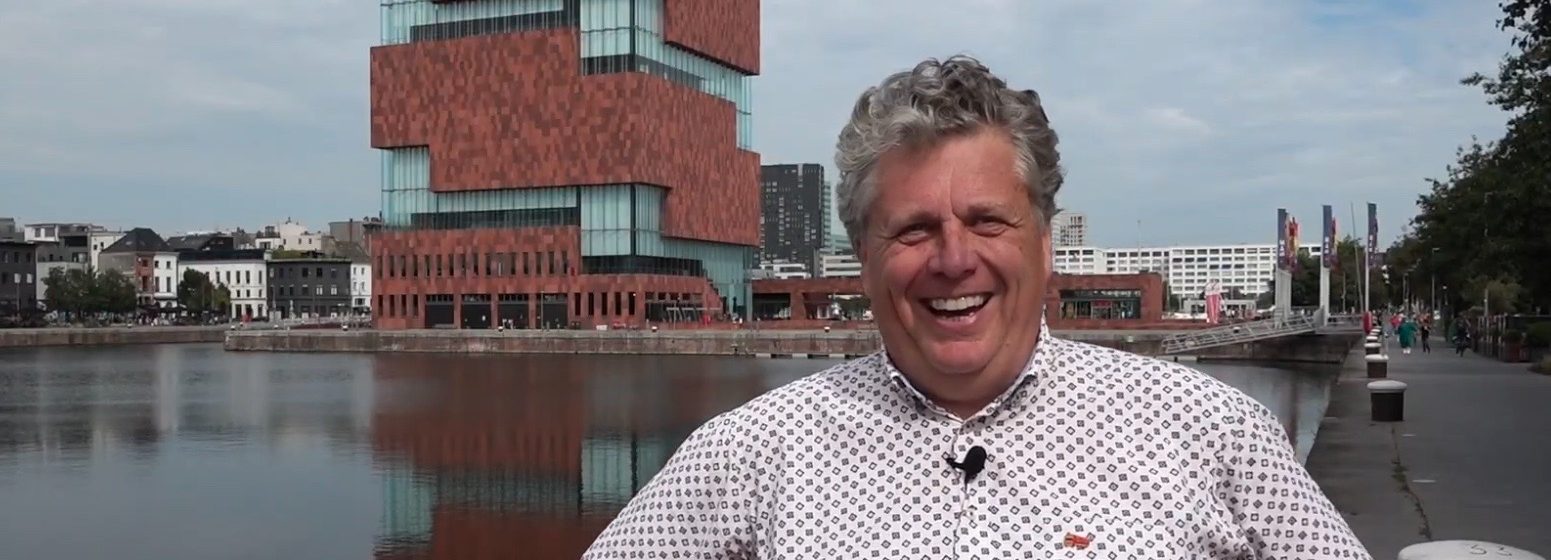
For the Flows summer series 2024, we are looking for stories of people from the maritime and logistics world who have a special passion or hobby. Each week you will also see an episode of ‘Geerts en de Schelde’, in which Marc Geerts takes us through the rich history of the port of Antwerp.
Entrepreneur Marc Geerts passed on his transport company to his three sons and has since thrown himself into his new career as a city guide in Antwerp. From there, the idea was born to create a reporting series in which Marc Geerts takes Flows through the rich history of the port of Antwerp.
Geerts could listen for hours to his great-grandparents’ stories about the two world wars. “My great-grandmother was born in 1896 and she still knew stories of her grandparents who had lived before Belgium’s independence,” he says. “I was enormously fascinated and gradually started looking up more and more information about this in history books. I wanted to check in that way whether those stories were true.”
Together with Marc Geerts, Flows canned the reportage series ‘Geerts en De Schelde’, which gives you an insight into the origins of the Antwerp port. In eight short episodes, Geerts looks back, in his own style, at a number of key moments in Antwerp’s history that have ensured the port evolved into the world port it is today.
Scheldt Free
In the fourth episode of ‘Geerts & De Schelde’, Marc Geerts takes us to the forts in the North of Antwerp. Alessandra Farnese, Duke of Parma and nephew of King Philip II of Spain, ordered the construction of two forts (Fort Sint-Marie on the left bank and Fort Sint-Filips on the right bank) in 1584 to gain better control over the Scheldt. Between the two forts came bridgeheads topped by a raft bridge with 64 guns. The bridge was to dry up the supply of Antwerp by ships. This succeeded and Antwerp surrendered to the Spanish troops.
Fort Liefkenshoek on the left bank and Fort Lillo on the right bank also played an important role in controlling shipping traffic to and from Antwerp. Among other things, a toll and customs station was located at this border point.
In 1863, the closure of the Scheldt, established by the Dutch in 1587 during the Eighty Years’ War, came to a definitive end. The surrender of the last Scheldt toll in 1863 by the Belgian government was considered the end of that closure. This prompted Antwerp to erect the ‘Scheldt Free’ monument at the Marnixplaats in 1883.
Finally, in episode 4 of ‘Geerts en De Schelde’, Geerts goes in search of the place in Antwerp where a cannonball from the shelling by the Dutch fleet in 1831 is still visible in the façade of a house.
Missed an episode of ‘Geerts en de Schelde’? No problem. You can watch all episodes here.



